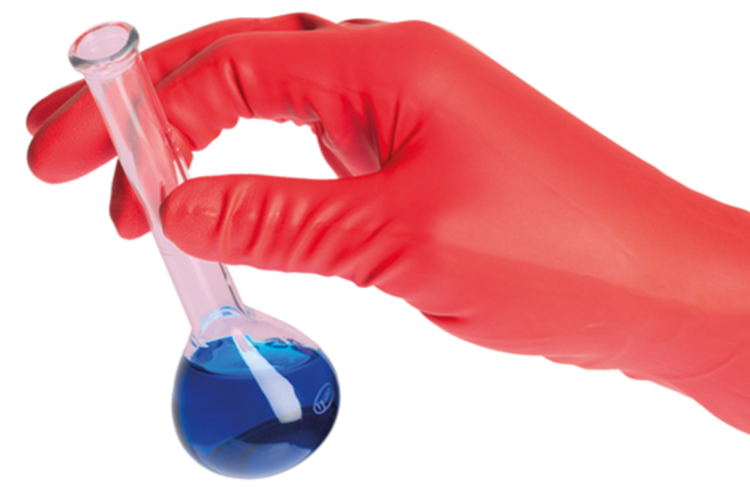
27 Jun Protection Against Chemicals: What to consider when Selecting Chemical Gloves
 Chemical gloves are one of the most crucial Personal Protective Equipment (PPE) when handling dangerous chemicals. While explosion is on the list, the chance of accident caused by coming in contact with chemical in a laboratory hit the top spot. Some chemicals might only cause some minor irritation. But some (and most of them unfortunately) can cause permanent damages on your skin.
Chemical gloves are one of the most crucial Personal Protective Equipment (PPE) when handling dangerous chemicals. While explosion is on the list, the chance of accident caused by coming in contact with chemical in a laboratory hit the top spot. Some chemicals might only cause some minor irritation. But some (and most of them unfortunately) can cause permanent damages on your skin.
Unfortunately, dangerous chemicals are essential in some chemical reactions and manufacturing process. As we have discussed before in our previous article about gloves , choosing the right PPE can be a choice of life and death. However, no gloves are resistant to all chemicals.
Which is the suitable material for your chemical gloves?
It is the most important that the material of the gloves can prevent degradation and permeation by the chemicals. Jack Weiss, the national account manager for Arbill Glove & Safety explained to EHS today that degradation refers to physical changes of the gloves caused by the chemicals. As an example, hydrocarbon type chemicals can easily degrade latex gloves very quickly but nitrile gloves can hold them much longer.
Permeation refers to penetration of chemicals that sipped through the glove barrier to come into contact with the wearer’s skin. A notorious example is the dimethyl mercury story that we have mentioned before here. Below are examples of most common gloves,
| Materials | Information |
| Latex gloves | · Suitable for water soluble solution (acids, alkalis, salts, and ketones) but not for water insoluble.
· Inexpensive Can cause allergies when used for a long time |
| Nitrile gloves | · Resistant towards aromatic petroleum (such as kerosene and gasoline) and chlorinated solvent.
· Not suitable for handling ketones, strong oxidizing acids and organic chemicals containing nitrogen · Durable and Inexpensive |
| Butyl gloves | · Highly resistant to gases and steam
· Expensive |
| Neoprene gloves | · Resistant towards corrosive chemicals
· Strong materials and good dexterity · Poor resistant towards chlorinated aromatic solvents, phenols, and ketones |
| Viton gloves | · Extreme resistance towards chemicals and heat
· Suitable for handling aromatic hydrocarbons · Very expensive |
| Silvershiled or 4H gloves | · Excellent resistance to wide range of chemicals
· Offer poor dexterity |
Is material the only concern?
While safety will be always the top priority, we can not ignore that the fiddly task in the laboratory requires gloves with comfort. In fact, chemical spill is a major cause of chemical exposure and can not be dangerous when it is not clean up properly. In addition, economy factor can not be ignored, as heavy use of expensive gloves can be cost heavy.
Thus, when selecting the appropriate chemical gloves, many things have to be taken into consideration. Firstly, what are the hazards of the chemicals and how long is the exposure. For this case, before each experiment or project, is important to always do a risk assessment and consult the Material Safety Data Sheet (MSDS). Second, identify the process. Are there fiddly tasks that require tight fitted gloves? Lastly, do not forget to set an appropriate budget. In some cases, the most expensive gloves would be the only choice to ensure that the laboratory personnel are safe from chemical hazards.
* Solmeglas is proud to be a partner of SHIELD Scientific, one of the leading PPE providers. SHIELD Scientific’s SHIELDskin CHEM ™ safety gloves offers a great resistance towards chemicals while also maintaining comfort and durability. Consult with Solmeglas’ expert team to select the most suitable gloves for your need!
Source
http://www.ehstoday.com/news/ehs_imp_33562
https://ehs.research.uiowa.edu/ppe-glove-selection-information


Sorry, the comment form is closed at this time.